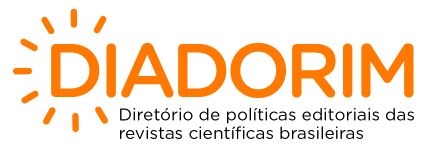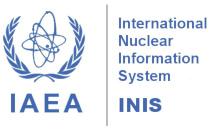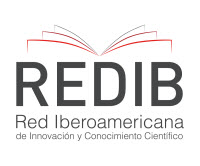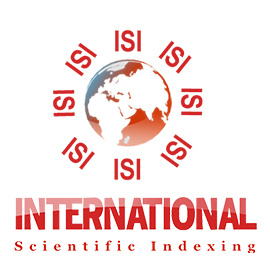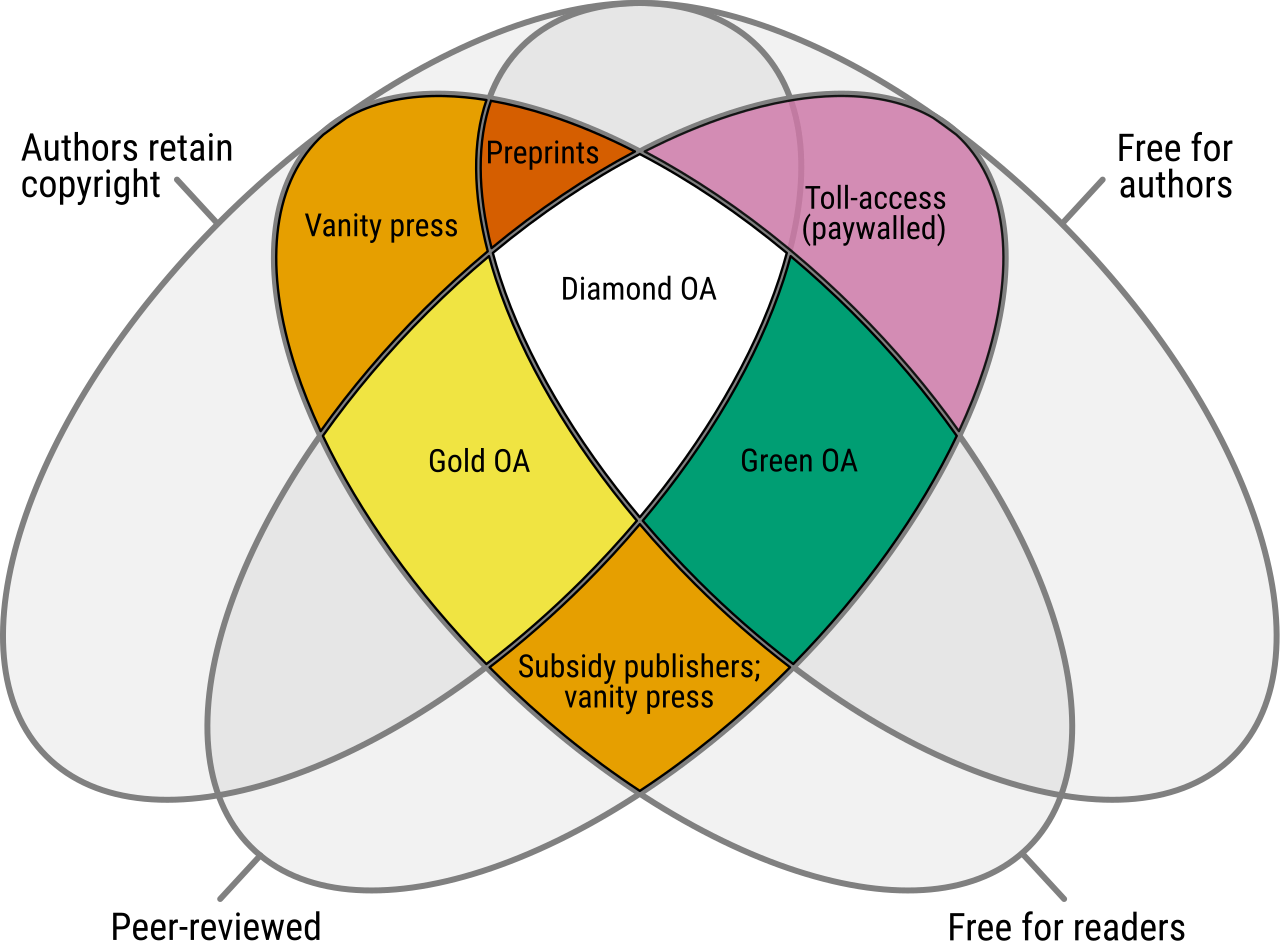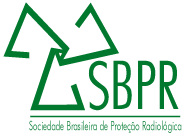The Brazilian panorama for the calibration of Y-90 microspheres
DOI:
https://doi.org/10.15392/2319-0612.2024.2699Keywords:
Y-90 microspheres, Radioembolization, StandardizationAbstract
The combination therapy approaches are gaining popularity, particularly the radiopharmaceutical therapy with external radiotherapy, immunotherapy or both. Radioembolization using Yttrium-90 Microspheres, SIR-Spheres and TheraSphere, has been used clinically in the treatment of locally advanced and unresectable Hepatic Carcinomas. According to the literature, the standardization of microspheres is not yet well established. In view of the practice of 90Y in therapies in Brazil, it is essential to develop solid standards for its measurement, in order to verify the absorbed radiation dose and its administration to the patient. This paper proposes a study of the existing standardization infrastructure for 90Y microspheres through a literature review and analysis of the measuring instruments available at the National Laboratory for Ionizing Radiation Metrology, a general analysis was made of the spectrometry and calibration methods available in Brazil, specifically at LNMRI, evaluating those suitable for use in the standardization of Yttrium microspheres. The results showed that in the period between 2000 and 2024 90Y was widely cited in treatment by radioembolization with microspheres, qualitative and quantitative evaluation of the activity quantity in PET/CT scans and its metrological characterization involving proficiency tests, study of impurities, standardization by primary and secondary methods
Downloads
References
[1] GRAVES, A. S.; MARTIN, M.; TIWARI, A.; MERRICK, M.; SUNDERLAND, J. SIR-Spheres Activity Measurements Reveal Systematic Miscalibration. The Journal of Nuclear Medicine, v. 6, n. 8, p. 1131-1135, 2022. DOI: https://doi.org/10.2967/jnumed.121.262650
[2] KURAMOTO, G. B. Compartmental and Dosimetric Studies of Anti-CD20 labelled with 188 Re. IPEN, São Paulo, Brazil, 2016.
[3] CHISTÉ, V.; BÉ, M. M. 90Y -Comments on evaluation of decay data. LNHB, [Publisher Location], 2015.
[4] KAWASHIMA, H. Characteristics of Ibritumomab as Radionuclide Therapy Agent. In: HOSONO, M.; CHATAL, J. F. (Eds.). Resistance to Ibritumomab in Lymphoma. Cham: Springer, 2018. (Resistance to Targeted Anti-Cancer Therapeutics, v. 18). DOI: https://doi.org/10.1007/978-3-319-78238-6_6
[5] BEATTIE, B. J.; KIROV, A. S.; KESNER, A. L. Technical Note: Impact of impurities on Yttrium-90 glass microsphere activity quantitation. Medical Physics, 2023. DOI: https://doi.org/10.1002/mp.16828
[6] BUSSE, N. C.; AL-GHAZI, M. S. A. L.; ABI-JAOUDEH, N.; et al. AAPM Medical Physics Practice Guideline 14.a: Yttrium-90 microsphere radioembolization. Journal of Applied Clinical Medical Physics, v. 25, n. 2, 2024. DOI: https://doi.org/10.1002/acm2.14157
[7] HENRY, E. C.; LOPEZ, B.; MAHVASH, A.; THOMAS, M. A.; KAPPADATH, S. C. Predicting the net administered activity in 90 Y-radioembolization patients from post-procedure 90 Y-SPECT/CT. Medical Physics, v. 50, n. 1, p. 7003-7015, 2023. DOI: https://doi.org/10.1002/mp.16540
[8] NAYDENOV, N.; TEPLOV, A.; ZIRAKCHIAN, M. Z.; et al. Yttrium-90 Activity Quantification in PET/CT-Guided Biopsy Specimens from Colorectal Hepatic Metastases Immediately after Transarterial Radioembolization Using Micro-CT and Autoradiography. Journal of Vascular and Interventional Radiology, v. 34, n. 9, p. 1556-1564, 2023. DOI: https://doi.org/10.1016/j.jvir.2023.05.022
[9] UÑA-GOROSPE, J. A.; BASO-PÉREZ, C.; CÁRDENAS-NEGRO, C.; et al. PET/CT calibration for post-treatment standard body scan acquisition with yttrium-90 resin micro-SPHERES. Revista Española de Medicina Nuclear e Imagen Molecular (English Edition), v. 41, n. 6, p. 368-372, 2022. DOI: https://doi.org/10.1016/j.remnie.2022.09.011
[10] GRYGIER, A.; SKUBACZ, K.; CHAŁUPNIK, S. The correction factors for UD802 dosimeters irradiated with different radiation energies and at different incidence angles. Journal of Radiological Protection, v. 41, n. 3, 2021. DOI: https://doi.org/10.1088/1361-6498/abfbee
[11] EBBERS, S. C.; KUNNEN, B.; VAN NIEROP, B. J.; et al. Verification Study of Residual Activity Measurements After Yttrium-90 Radioembolization with Glass Microspheres. Cardiovascular and Interventional Radiology, v. 43, n. 9, p. 1378-1383, 2020. DOI: https://doi.org/10.1007/s00270-020-02504-7
[12] OSTER, L.; ELIYAHU, I.; HOROWITZ, Y. S.; et al. Demonstration of the potential and difficulties of combined TL and OSL measurements of tld-600 and tld-700 for the determination of the dose components in complex neutron-gamma radiation fields. Radiation Protection Dosimetry, v. 188, n. 3, p. 383-388, 2020. DOI: https://doi.org/10.1093/rpd/ncz297
[13] D'ARIENZO, M.; PIMPINELLA, M.; DE COSTE, V.; et al. Absorbed dose measurements from a 90Y radionuclide liquid solution using LiF: Mg, Cu, P thermoluminescent dosimeters. Physica Medica, v. 69, p. 127-133, 2020. DOI: https://doi.org/10.1016/j.ejmp.2019.11.010
[14] BALAGOPAL, A.; KAPPADATH, S. C. Characterization of 90 Y-SPECT/CT self-calibration approaches on the quantification of voxel-level absorbed doses following 90 Y-microsphere selective internal radiation therapy. Medical Physics, v. 45, n. 2, p. 875-883, 2018. DOI: https://doi.org/10.1002/mp.12695
[15] PAN, J.; EMANUELE, K.; MAHER, E.; et al. Analysis of radioactive strontium-90 in food by Čerenkov liquid scintillation counting. Applied Radiation and Isotopes, v. 126, p. 214-218, 2017. DOI: https://doi.org/10.1016/j.apradiso.2017.01.034
[16] STRYDHORST, J.; CARLIER, T.; DIEUDONNÉ, A.; et al. A gate evaluation of the sources of error in quantitative90 Y PET. Medical Physics, v. 43, n. 10, p. 5320-5329, 2016. DOI: https://doi.org/10.1118/1.4961747
[17] YUE, J.; MAUXION, T.; REYES, D. K.; et al. Comparison of quantitative Y-90 SPECT and non-time-of-flight PET imaging in post-therapy radioembolization of liver cancer. Medical Physics, [Publisher Location], v. 43, n. 10, p. 5779, 2016. DOI: https://doi.org/10.1118/1.4962472
[18] ATTARWALA, A. A.; MOLINA-DURAN, F.; BÜSING, K. A.; et al. Quantitative and qualitative assessment of Yttrium-90 PET/CT imaging. PLoS One, v. 9, n. 11, 2014. DOI: https://doi.org/10.1371/journal.pone.0110401
[19] DZIEL, T.; LISTKOWSKA, A.; TYMIŃSKI, Z. Proficiency test of ⁹⁰Y and ⁸⁹Sr activity measurements in Polish hospitals. Applied Radiation and Isotopes, v. 8, p. 24-26, 2014. DOI: https://doi.org/10.1016/j.apradiso.2013.11.055
[20] GOEDICKE, A.; BERKER, Y.; VERBURG, F. A.; et al. Study-parameter impact in quantitative 90-Yttrium PET imaging for radioembolization treatment monitoring and dosimetry. IEEE Transactions on Medical Imaging, v. 32, n. 3, p. 485-492, 2013. DOI: https://doi.org/10.1109/TMI.2012.2221135
[21] PEITL, P. K.; TOMSE, P.; KROŠELJ, M.; et al. Influence of radiation source geometry on determination of (111)In and (90)Y activity of radiopharmaceuticals. Nuclear Medicine Communications, v. 30, n. 10, p. 807-814, 2009. DOI: https://doi.org/10.1097/MNM.0b013e32832fd0ea
[22] BADIAVAS, K.; CHATZOPOULOS, D.; MARKOU, P. Radiation doses from patients undergoing yttrium-90 silicate knee radiosynovectomy. Hellenic Journal of Nuclear Medicine, v. 9, n. 1, p. 65-68, 2006.
[23] L'ANNUNZIATA, M. F.; PASSO, C. J. Jr. Cherenkov counting of yttrium-90 in the dry state; correlations with phosphorus-32 Cherenkov counting data. Applied Radiation and Isotopes, v. 56, n. 6, p. 907-916, 2002. DOI: https://doi.org/10.1016/S0969-8043(01)00276-7
[24] MÜCK, K.; SCHMIDT, W.; WEXBERG, P.; et al. Design and dosimetry of a novel 90Y beta source to prevent restenosis after angioplasty. International Journal of Radiation Oncology, Biology, Physics, v. 46, n. 1, p. 249-255, 2000. DOI: https://doi.org/10.1016/S0360-3016(99)00350-8
Downloads
Published
Issue
Section
Categories
License
Copyright (c) 2025 Thamyra Cybelle Vieira dos Santos, Ms Dayana Azeredo da Conceição, Dr José Ubiratan Delgado

This work is licensed under a Creative Commons Attribution 4.0 International License.
Licensing: The BJRS articles are licensed under a Creative Commons Attribution 4.0 International License, which permits use, sharing, adaptation, distribution and reproduction in any medium or format, as long as you give appropriate credit to the original author(s) and the source, provide a link to the Creative Commons license, and indicate if changes were made. The images or other third party material in this article are included in the article’s Creative Commons license, unless indicated otherwise in a credit line to the material. If material is not included in the article’s Creative Commons license and your intended use is not permitted by statutory regulation or exceeds the permitted use, you will need to obtain permission directly from the copyright holder. To view a copy of this license, visit http://creativecommons.org/licenses/by/4.0/




